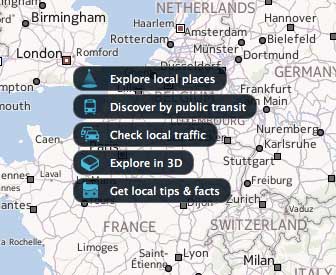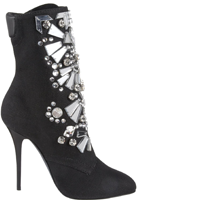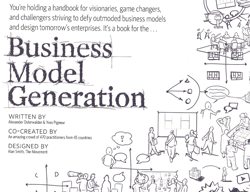
The Complete Product Owner
Act I: The Product
This post is part of the “Complete Product Owner” series.
Products never exist in a vacuum. Products live in a world of competitors and partners, of peripherals, networks and enablers. Products live inside an ecosystem consisting of companies, governments, regulators and consumers.
To understand what your product does, what value it adds and how, it is crucial to understand the competitive landscape around you.

A “classic” ecosystem
Who else is doing what you do?
The first thing to understand is who is doing what you do. There may be companies offering the same or a similar value proposition as you, or companies in a similar space offering slightly different propositions.
For most industries a quick search on Google can usually reveal most of the competitive landscape. Additionally, talking with users and people from your target group, either as part of formal user research or casual conversations, can reveal other products and companies who are operating in your space.
When you have your list of main competitors, break them down one by one and take a close look at what they do. What are their strengths? What are their weaknesses?
A useful tool is the old, tried and tested, SWOT framework (strengths, weaknesses, opportunities, threats). If you’ve ever picked up a book on business then you’ve seen this tool, guaranteed. As cliche as it is, it is actually a useful method for breaking down the differentiation between you and your competitors. (For information on the SWOT tool, here is a pretty simple explanation with examples.)
Product
The first and most obvious place to start is by examining the product itself. How does their consumer value proposition differ from yours? Do they offer the same product features? The same user experience?
The differences between two products can be both subtle and large. Take for example these two products: Get Satisfaction, and User Voice. Both have a similar overall proposition: they are online tools that software products can use to get real-time feedback from users. Both are hosted solutions (meaning the integrating product does not need to add any code or infrastructure within their product; they just provide a link to the hosted feedback collection product), and both have similar price points. On the surface, they seem the same: but a level deeper and the differences begin to emerge, as described here. (Note on this thread the way the CEOs from each company compare their products against each other. Each CEO is acutely aware of the other company, but describes in detail, and with respect, the positive differences in proposition first, rather than focusing on negative elements of the “competition”. Admirable.)
Business Model
Differentiation against a competitor company does not always come purely from the consumer value proposition: the entire business model plays a role. Examine your competition’s business model and ways of working. How does their business model differ from yours? How do they organise themselves?
Marketing
How and where do your competitors talk to their users/consumers? What kind of messages do they use?
Values and beliefs
What do your competitors believe in? Do they believe the same things as you? What do they see as important, and how do they view the world, compared with you?
Consider the example of Get Satisfaction vs User Voice above. Although both products offer similar features at a similar price, the fundamental difference between the two products is what they believe is important. User Voice believes that the aspect of collecting suggestions and ideas from users is the critical axis, whereas Get Satisfaction focus more on the user forum aspect, where users can exchange knowledge, tips and report problems.
Both products offer nearly the same actual features, but what sets them apart is a core belief about what is important.
Learn from your competitors
Steve Jobs is often quoted as having quoted Picasso when he said:
“Good artists copy. Great artists steal.”
You can learn a lot from watching and analysing competing products carefully. Don’t be afraid to leverage knowledge, experience and solutions from other companies and products. If that other product has the perfect user sign-in experience, then take it, re-work it to fit your needs, and use it.
Remember, it’s not about having the pride of having “designed it all ourselves”. It’s about getting things done. Being (and remaining) successful as a product team is all about how quickly you can bring user value to users. The longer it takes, the more risk you pile up. (We’ll discuss this in much more detail in later chapters of The Complete Product Owner). If you can save a few days on the design of a peripheral flow, then do it.
Why should I buy your product over theirs?
One of the most common questions you will be asked as a product owner is: “why should I use your product over theirs?” In other words, as a consumer, why should someone pay you (with either their cash, their time, their clicks on ads, etc) for your product over your competition’s? What have you got that they don’t?
Here, a detailed analysis of the strengths and weaknesses will not help you answer this for a user. What you need is a story that not only reveals how you are different, but that encourages the use of one over the other. It comes back to your consumer value proposition: what value do you offer, and how?
This is another little “pitch” you should practice often, as I promise you, you’ll get this question all the time.
Broaden your scope
Also keep in mind it’s not just about your direct competitors. Broaden your scope to look at companies and products that operate in the same space as you, even if they are not direct competition. You can leverage ideas and knowledge from similar companies, or also look for interesting opportunities to partner with other products or companies for mutual benefit.
Summary
Your product and your company do not exist in a vacuum. You need to constantly watch, review, and analyse your competitors, your partners, and your industry. Know how you are different, and how you are the same. Also think about companies and products that operate peripheral to you; how can you leverage them or partner with them?
And always have a good answer ready to the question that will frequently come: “why should I buy your product instead of theirs?”
In the next post in the Complete Product Owner series, we’ll look at the product vision.
Resources

The Complete Product Owner
Act I: The Product
This post is part of the “Complete Product Owner” series.



 Babylonian map of the world, dated around 6BC. Source:
Babylonian map of the world, dated around 6BC. Source:  Apple schematic maps concept mockups. Source: Patent application.
Apple schematic maps concept mockups. Source: Patent application. City Exploration on
City Exploration on 

